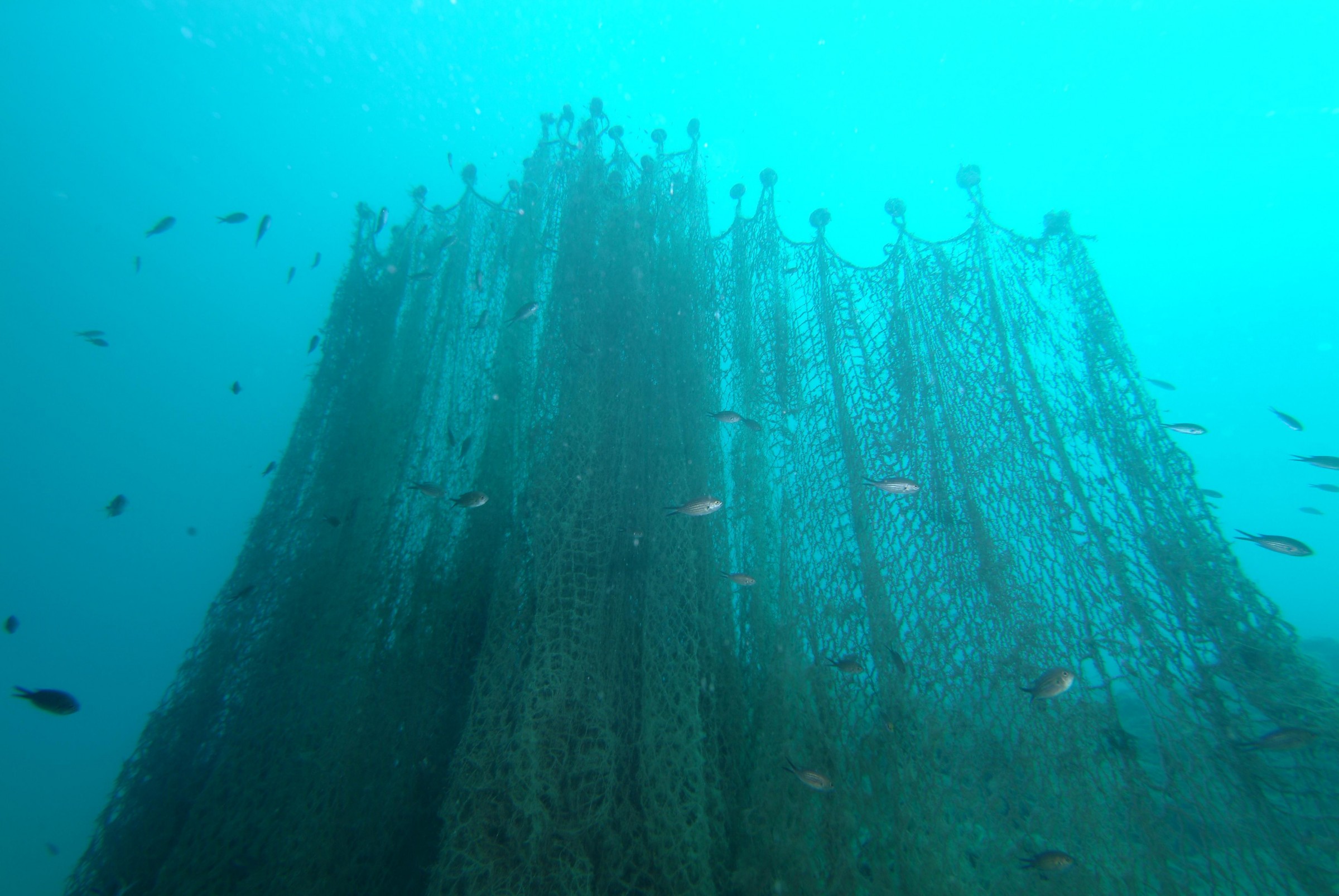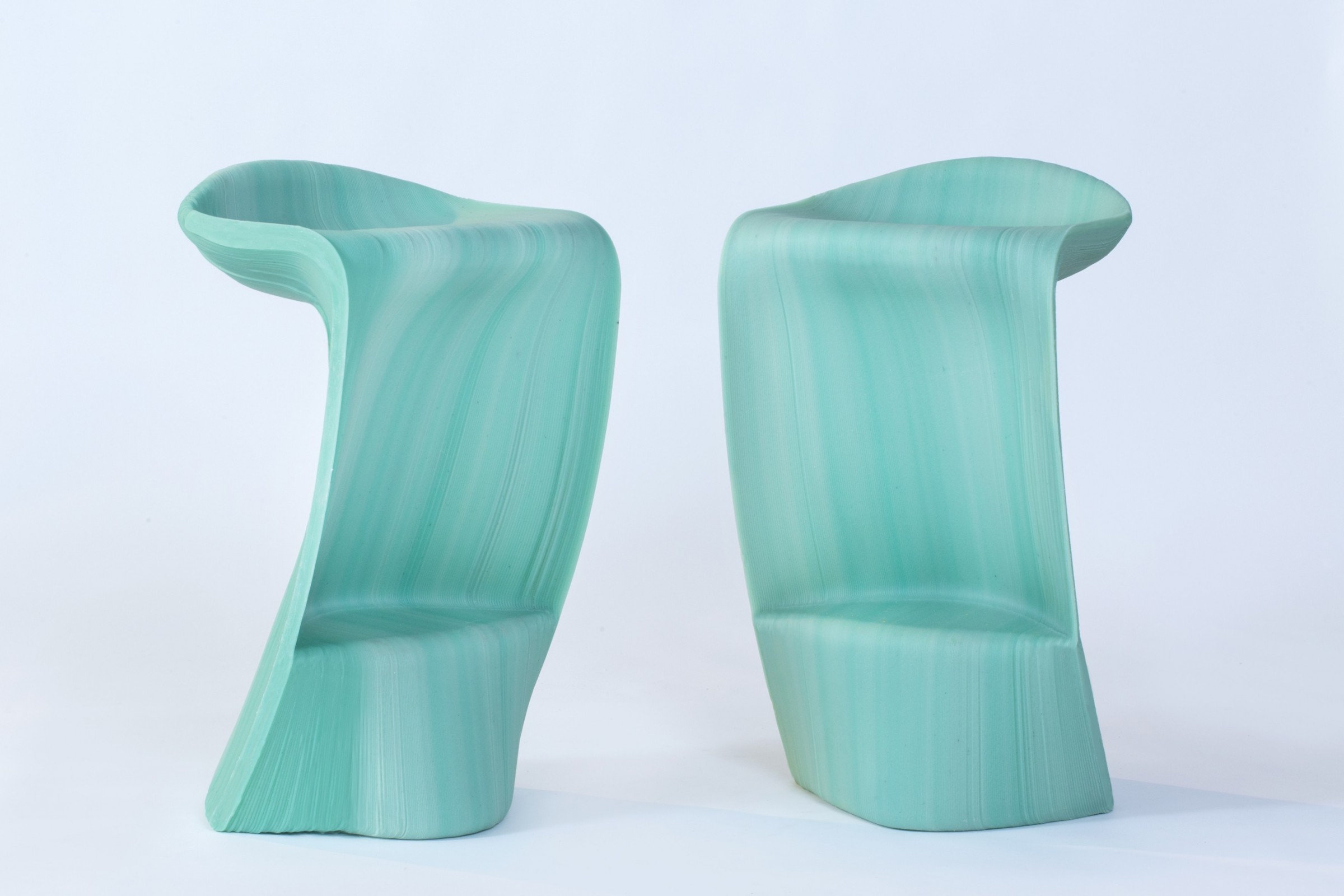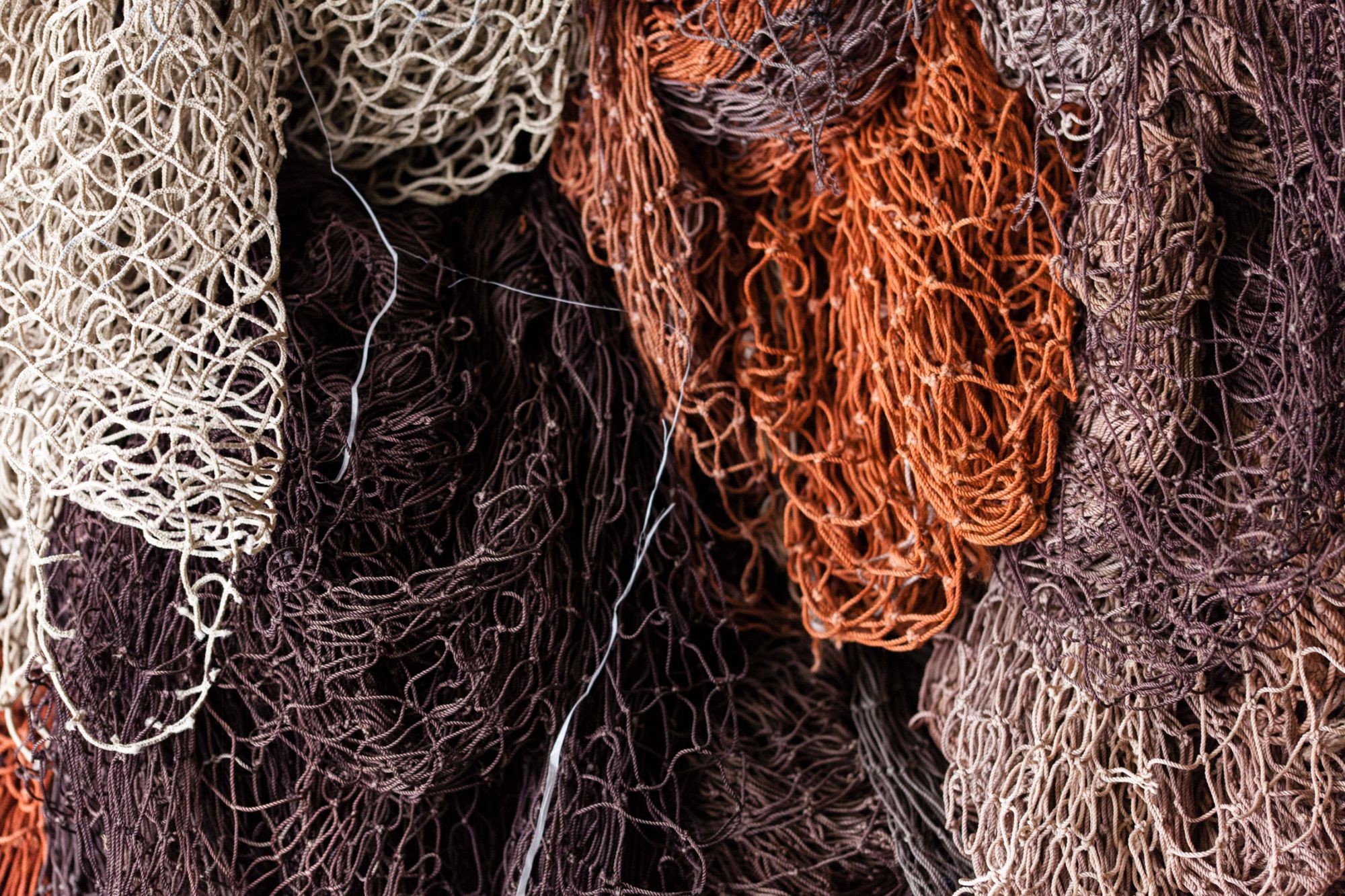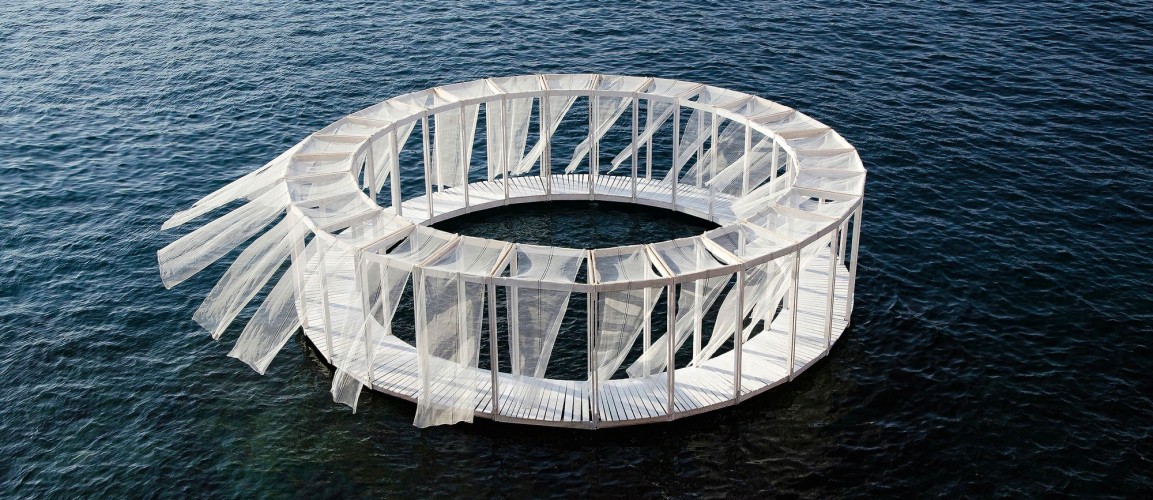BlueCycle: Ο γαλάζιος κύκλος που αφορά όλους μας
DS.WRITER:
Christina Ioakeimidou
Πηγή Κεντρικής Εικόνας: econyl.com
Μπορούν τα πλαστικά απορρίμματα, που συναντάμε όλοι στις ακτές και τη θάλασσα, να γίνουν μέρος ενός νέου κύκλου ζωής, συμβάλλοντας στην ανάπτυξη; Και, κυρίως, πώς αυτό είναι δυνατόν να γίνει; Την απάντηση στα παραπάνω ερωτήματα τη δίνει το BlueCycle, ένα πρόγραμμα που στόχο έχει να επανεντάξει στη ζωή τα πλαστικά που καταλήγουν σωρηδόν στις θάλασσες, είτε από την αλιεία είτε από τη ναυτιλία.
Το βασικό πρόβλημα των «διχτυών φαντασμάτων»
Αρχικά, θα πρέπει να προσδιοριστεί το κυριότερο πρόβλημα των πλαστικών στις θάλασσες, και αυτό φυσικά δεν είναι μόνο τα μικρά πλαστικά αντικείμενα, όπως τα μπουκάλια ή τα καλαμάκια, αλλά τα πολλά αντικείμενα που εγκαταλείπονται από την εκτεταμένη αλιεία και τη ναυτιλιακή δραστηριότητα. Τα «δίχτυα φαντάσματα», όπως είναι γνωστά, είναι δίχτυα που έχουν τεθεί σε αχρηστία και βρίσκονται κυριολεκτικά παρατημένα στις θάλασσες. Με τα πλαστικά καλαμάκια να αποτελούν μόνο το 1% των πλαστικών που υπάρχουν στις θάλασσες, το ποσοστό των «διχτυών φαντασμάτων» ανέρχεται περίπου στο 46% των πλαστικών του υδάτινου ορίζοντα, ενώ άλλα είδη όπως σχοινιά, καλάθια αλιείας ή κιβώτια, συμπληρώνουν τον όλο και αυξανόμενο αριθμό άχρηστων εργαλείων που χρησιμοποιούνται από την αλιευτική βιομηχανία. Οι συνέπειες αυτών των αντικειμένων είναι τραγικές για την υδάτινη πανίδα, αφού μόνο ένα δίχτυ μπορεί να φέρει τον θάνατο 30 ή και 40 ζώων που εγκλωβίζονται σε αυτό.

Εικόνα των «Ghost nets» στον βυθό. | Πηγή εικόνας: reddit.com
Όπως είναι αναμενόμενο, το πρόβλημα εντοπίζεται σε παγκόσμια κλίμακα, αφού βάσει στοιχείων, αν και σε πολλές χώρες η πρακτική ψαρέματος με μεγάλα δίχτυα έχει απαγορευτεί, δεν είναι λίγες οι φορές που εντοπίζονται παράνομοι αλιείς που επιμένουν να τα χρησιμοποιούν. Φυσικά, η απουσία ενημέρωσης από τις αρχές της εκάστοτε χώρας επιτείνει το πρόβλημα, χωρίς να δίνει τη δυνατότητα πρόσβασης σε εναλλακτικές μορφές αλιείας. Ωστόσο, ένα ακόμα ερώτημα που προκύπτει, είναι το πώς είναι δυνατόν να επαναχρησιμοποιηθούν αυτοί οι τόνοι πλαστικών διχτυών και παράλληλα να αρχίσει η ενημέρωση του ευρέος κοινού για το πρόβλημα.
Ο σχηματισμός του γαλάζιου κύκλου
Την απάντηση στο πρόβλημα έδωσε η πρωτοβουλία του Ιδρύματος Αικατερίνη Λασκαρίδη, όταν, σε συνεργασία με τους αρχιτέκτονες του The New Raw, Πάνο Σακκά και Φωτεινή Σετάκη, προχώρησε στην παραγωγή του ντοκιμαντέρ Second Nature. Με γνώμονα το ντοκιμαντέρ της κινηματογραφίστριας Δάφνης Ματζιαράκη, άρχισε να προβάλλεται η επιτακτική ανάγκη για την ευαισθητοποίηση του κοινού αναφορικά με τα πλαστικά απορρίμματα, αλλά τέθηκε και για πρώτη φορά, σε ευρωπαϊκή κλίμακα, η βάση της ανάπτυξης ενός ολιστικού προγράμματος για την αξιοποίηση αυτών των παρατημένων αντικειμένων. Έτσι, και έχοντας ως στόχο την αξιοποίηση νέων τεχνολογιών, ξεκίνησε το 2019 το πρόγραμμα BlueCycle, υπό την αιγίδα, για ακόμα μία φορά, του Ιδρύματος Α. Λασκαρίδη.

Πηγή εικόνας: mononews.gr
Φυσικά, η δύναμη του προγράμματος έρχεται και από τις πολλές συνεργασίες του με άλλους εγκεκριμένους οργανισμούς και ιδρύματα, έτσι ώστε να υπάρχει μία διεπιστημονική προσέγγιση στο θέμα. Μερικοί από τους φορείς που συμβάλλουν σε αυτή την προσπάθεια, είναι η Σχολή Χημικών Μηχανικών του Εθνικού Μετσόβιου Πολυτεχνείου (υπεύθυνη για τον ποιοτικό έλεγχο του παραγόμενου υλικού), το Πλαστικουργείο, η ΣΒΠΕ κ.α.
Ο τρόπος λειτουργίας του προγράμματος
Όπως αναφέρει η Σουζάνα Λασκαρίδη, δημιουργός του BlueCycle, στο mononews, «Ο νέος κύκλος είναι μια νέα αντιμετώπιση. Είναι η ουσία της κυκλικής οικονομίας, η οποία μας ζητάει να αναθεωρήσουμε τα υλικά και όλα τα αντικείμενα γύρω μας, από την αρχή της ζωής τους μέχρι το τέλος. Το απόρριμμα είναι κάτι που έχουμε επιλέξει να φτιάχνουμε μέσα από τη σχεδιαστική διαδικασία, ένα σχεδιαστικό λάθος. Οφείλουμε να προσεγγίσουμε εξ αρχής διαφορετικά το κάθε αντικείμενο, σε κάθε φάση της “ζωής” του, από τον σχεδιασμό στην εκτέλεση και την απόρριψη, και αυτός είναι ο νέος κύκλος ζωής. Αυτό δεν ισχύει μόνο για τα πλαστικά απορρίμματα από την αλιεία και τη ναυτιλία, απλά εμείς ξεκινήσαμε την εφαρμογή της προσέγγισης αυτής για τα συγκεκριμένα υλικά.».
Με αυτόν τον τρόπο, το πρόγραμμα της Γαλάζιας και Κυκλικής οικονομίας του BlueCycle ξεκινά με τη συλλογή των αντικειμένων από τον καθαρισμό των ακτών και των θαλασσών από εθελοντές διάφορων οργανισμών. Αφού τα απορρίμματα συλλεχθούν, μεταφέρονται στους σταθμούς συλλογής θαλάσσιων απορριμμάτων της Aegean Rebreath, που βρίσκονται σε πολλά σημεία της Ελλάδας. Επίσης, υλικά μπορεί να συλλεχθούν και από τους ίδιους τους κατασκευαστές και προμηθευτές αλιευτικών και ναυτιλιακών εξοπλισμών.
Σημαντικό και καθοριστικό στάδιο στην όλη διαδικασία είναι το εργαστήριο του προγράμματος στον Πειραιά, που έχει ανοίξει τις πόρτες του για κάθε ερευνητή ή ενδιαφερόμενο. Εκεί, γίνεται η επεξεργασία και ανακύκλωση των συλλεχθέντων υλικών. Οι διαδικασίες που ακολουθούνται είναι ποικίλες. Η επεξεργασία του πλαστικού και η μετατροπή του σε πέλλετ για την επανένταξή του στη βιομηχανία και η μελέτη για τη βιωσιμότητα των υλικών, είναι κάποιες από τις λειτουργίες του εργαστηρίου. Επιπλέον, το BlueCycle Lab στοχεύει και στην καλλιτεχνική μεταμόρφωση των πλαστικών, ενώ η σειρά επίπλων Second Nature χαρακτηρίζει τη φιλοσοφία του προγράμματος και των ανθρώπων πίσω από αυτό.

Πηγή εικόνας: mononews.gr
Τα προϊόντα της σειράς κατασκευάζονται με την τεχνολογία ψηφιακού σχεδιασμού, με τη χρήση της τρισδιάστατης ρομποτικής εκτύπωσης. Όλοι οι καλλιτέχνες του εγχειρήματος χρησιμοποιούν πλαστικά υλικά που βρέθηκαν στη θάλασσα, καταδεικνύοντας την ανάγκη ανάδειξης ενός νέου τύπου επιχειρηματικού προγράμματος που στόχο έχει τη βιωσιμότητα, αφού όλα τα objets d’arts που παράγονται από το εργαστήριο είναι πλήρως ανακυκλώσιμα.
Άλλες δραστηριότητες του BlueCycle
Εκτός από την έρευνα, τη μελέτη και την προσπάθεια επανένταξης των πλαστικών στις καθημερινές πρακτικές της βιομηχανίας ή της ιδιωτικής ζωής, το πρόγραμμα κινητοποιεί τη συνείδηση του κοινού για την προστασία των θαλασσών και την πρόληψη της περαιτέρω θαλάσσιας ρύπανσης. Χωρίς να μένει, απλώς, στη συμμετοχή σε παράκτιους και θαλάσσιους καθαρισμούς, το BlueCycle συμβάλλει στην ενθάρρυνση της δημιουργίας ενός συστήματος επιστροφής των χρησιμοποιημένων υλικών, με σκοπό την επαναχρησιμοποίησή τους με βάση τις αρχές της κυκλικής οικονομίας.
Ευελπιστούμε ότι παρόμοιες δράσεις θα συνεχίσουν να πραγματοποιούνται και θα πολλαπλασιάζονται, ούτως ώστε να υπάρξει μία γενικότερη κινητοποίηση του κοινού αλλά και των επαγγελματιών τού χώρου του design. Η ανάγκη για διαφοροποίηση του τρόπου πρόσληψης των αντικειμένων, και κυρίως των φαινομενικά άχρηστων, είναι δυνατή μέσα από την επαναχρησιμοποίησή τους και την επανένταξή τους στον κύκλο της ζωής. Σίγουρα το πρόγραμμα BlueCycle δεν θα είναι μία μόνη πράξη, αλλά το έναυσμα για μία γενική μεταστροφή.
Πηγές για περαιτέρω διάβασμα:
Δίχτυα Φαντάσματα (Ghost Nets) - 46% των πλαστικών στη θάλασσα. Από: https://veganworld.gr/ghost-nets-molynsi-thalasson-plastika-dyxtia-fantasma/.
Σουζάνα Λασκαρίδη: η αναγεννησιακή BlueCycle δημιουργεί οικολογική τέχνη. Από: https://www.mononews.gr/agores/interviews/souzana-laskaridi-i-anagennisiaki-blue-cycle-dimiourgi-ikologiki-techni.
BLUECYCLE. Από: https://www.visitgreece.gr/blog/travel-tips/1336/bluecycle/.
Αναλυτικές πληροφορίες για το πρόγραμμα BlueCycle στο: https://bluecycle.com/ και στη σελίδα του Ιδρύματος Αικατερίνη Λασκαρίδη, στο: http://www.laskaridisfoundation.org/en/bluecycle/.
Το ντοκιμαντέρ Second Nature στο: https://vimeo.com/255920370.







.jpg)
.jpg)